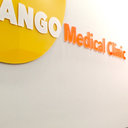SC-III3, a novel scopoletin derivative, induces autophagy of human hepatoma HepG2 cells through AMPK/mTOR signaling pathway by acting on mitochondria.
Klíčová slova
Abstraktní
(E)-3-(4-chlorophenyl)-N-(7-hydroxy-6-methoxy-2-oxo-2H-chromen-3-yl) acrylamide (SC-III3), a newly synthesized derivative of scopoletin, was previously shown to reduce the viability of HepG2 cells and tumor growth of HepG2 xenograft mouse model. It induces the death of HepG2 cells by a way irrelevant to apoptosis and necrosis. To shed light on the cytotoxic mechanisms of SC-III3, the present study addresses whether and how it can induce autophagic cell death. When HepG2 cells were incubated with various concentrations of SC-III3, autophagic vacuoles could be observed by transmission electron microscopy and monodansylcadaverine staining. Increased expressions of LC3-II to LC3-I and Beclin-1, required for autophagosome formation, were accompanied. These characteristics integrally indicated that SC-III3 could initiate autophagy in HepG2 cells. N-acetyl-l-cysteine (NAC), a ROS scavenger, could reverse SC-III3-caused ROS accumulation, but it did not affect SC-III3-induced autophagy, suggesting that ROS was not involved in SC-III3-mediated autophagy in HepG2 cells. SC-III3 significantly depressed mitochondrial function, as evidenced by disruption of mitochondrial transmembrane potential and loss of the mitochondrial cristae structure, as well as decrease of Cox-I, Cox-III, Cox-IV, and ATP levels. The autophagy and activation of AMPK-TSC2-mTOR-p70s6k pathways induced by SC-III3 in HepG2 cells could be efficiently blocked by pre-treatments of compound C (an inhibitor of AMPK). Moreover, addition of extracellular ATP to the cell culture media could reverse SC-III3-caused activation of AMPK-TSC2-mTOR-p70s6k pathway, autophagy and cell viability decrease in HepG2 cells. Collectively, SC-III3 leads to autophagy through inducing mitochondrial dysfunction, depleting ATP, and activating AMPK-mTOR pathway, which thus reflects the cytotoxic effect of SC-III3 in HepG2 cells.




